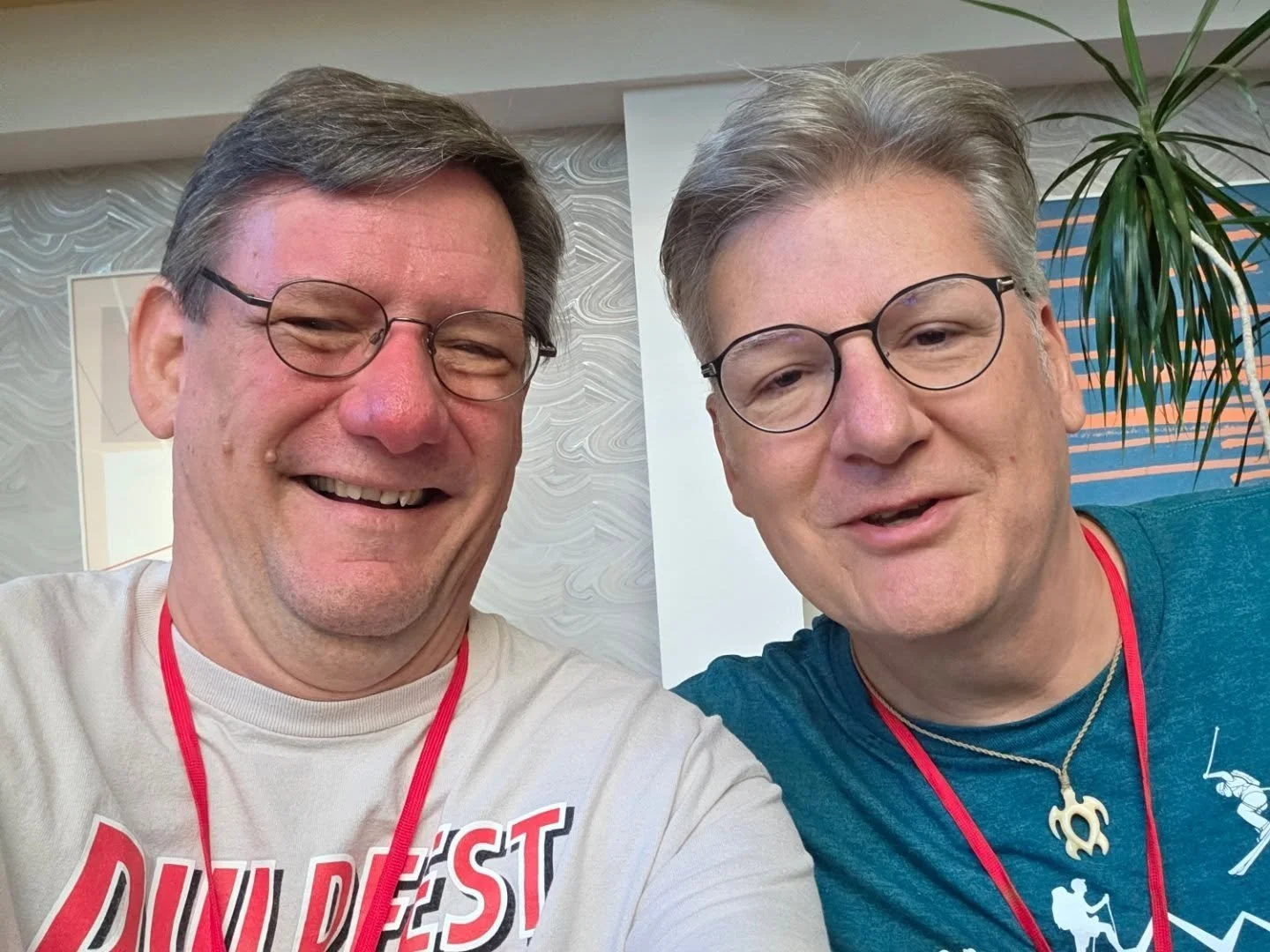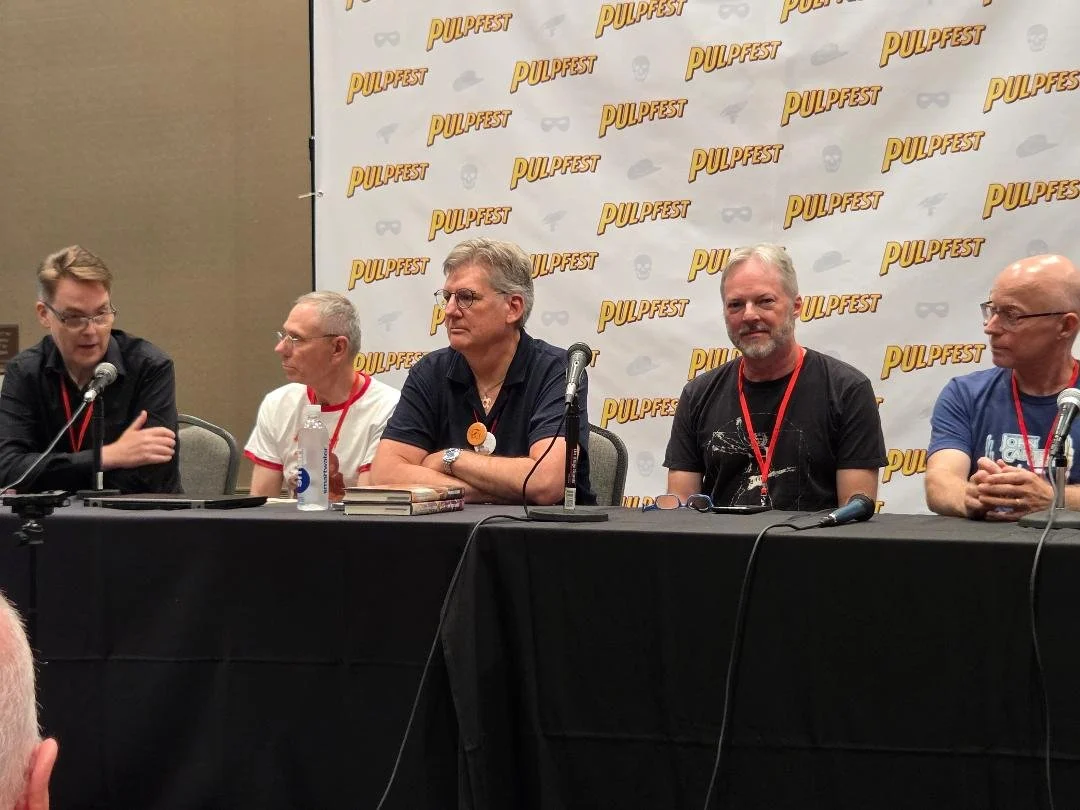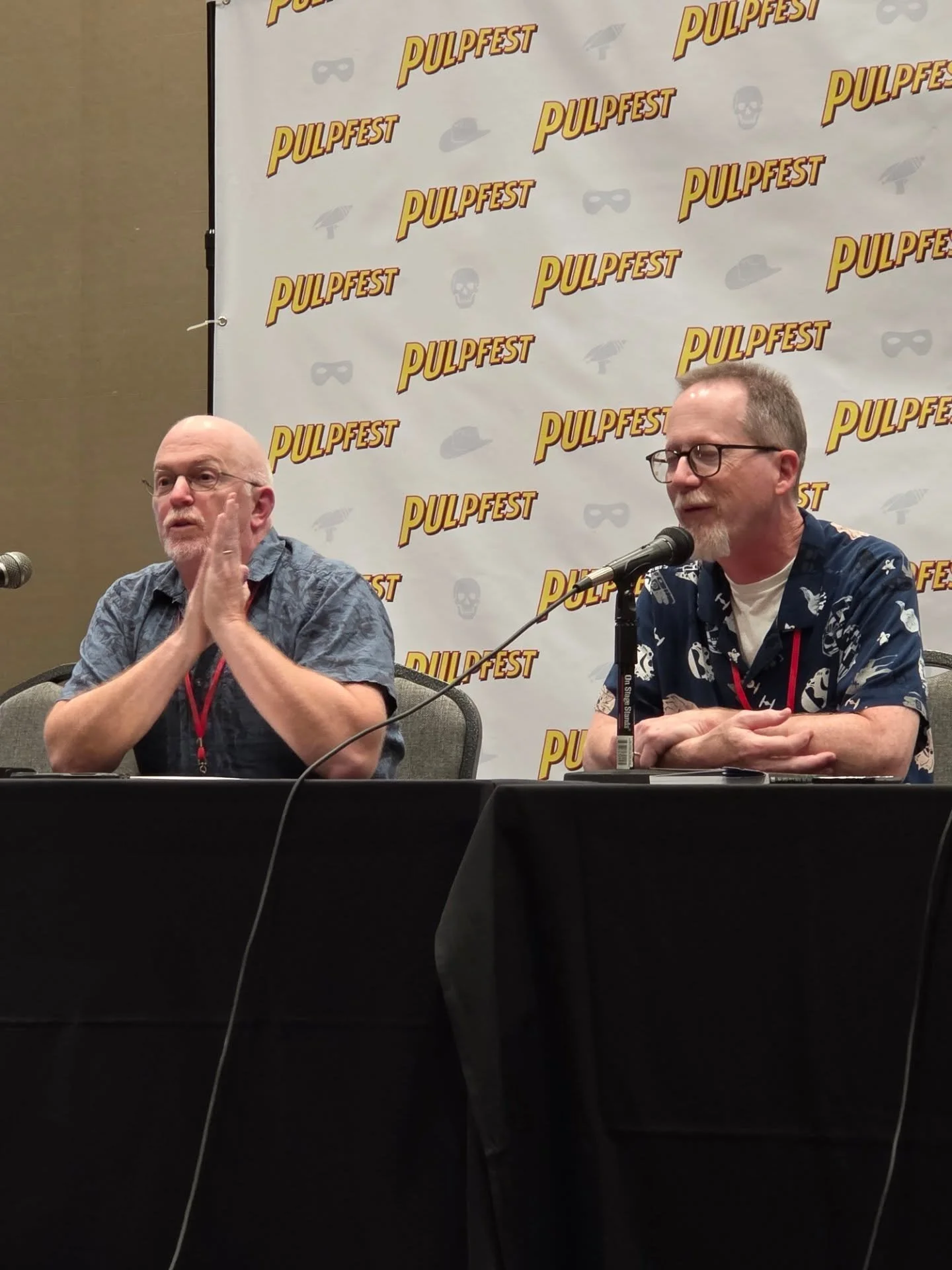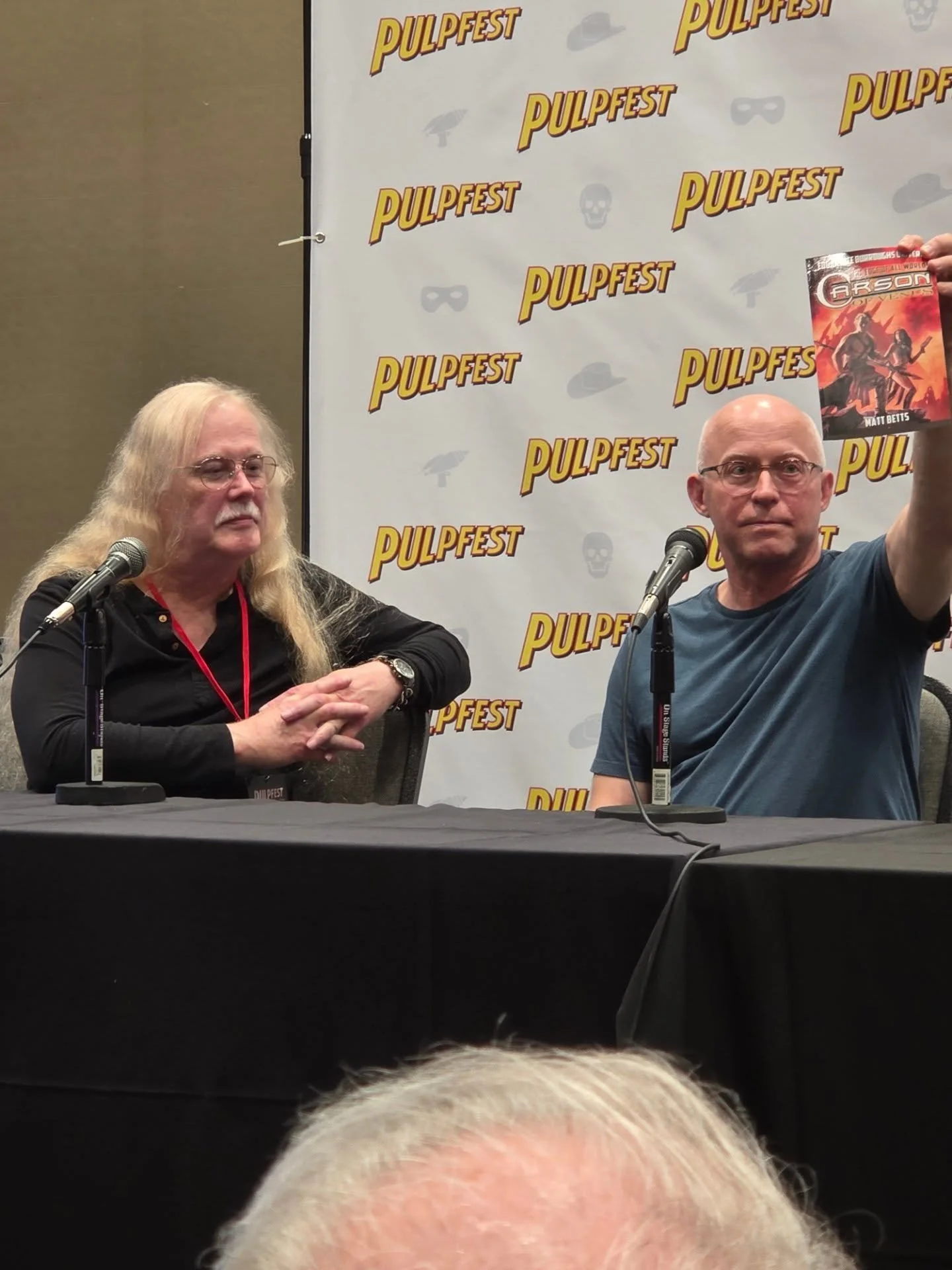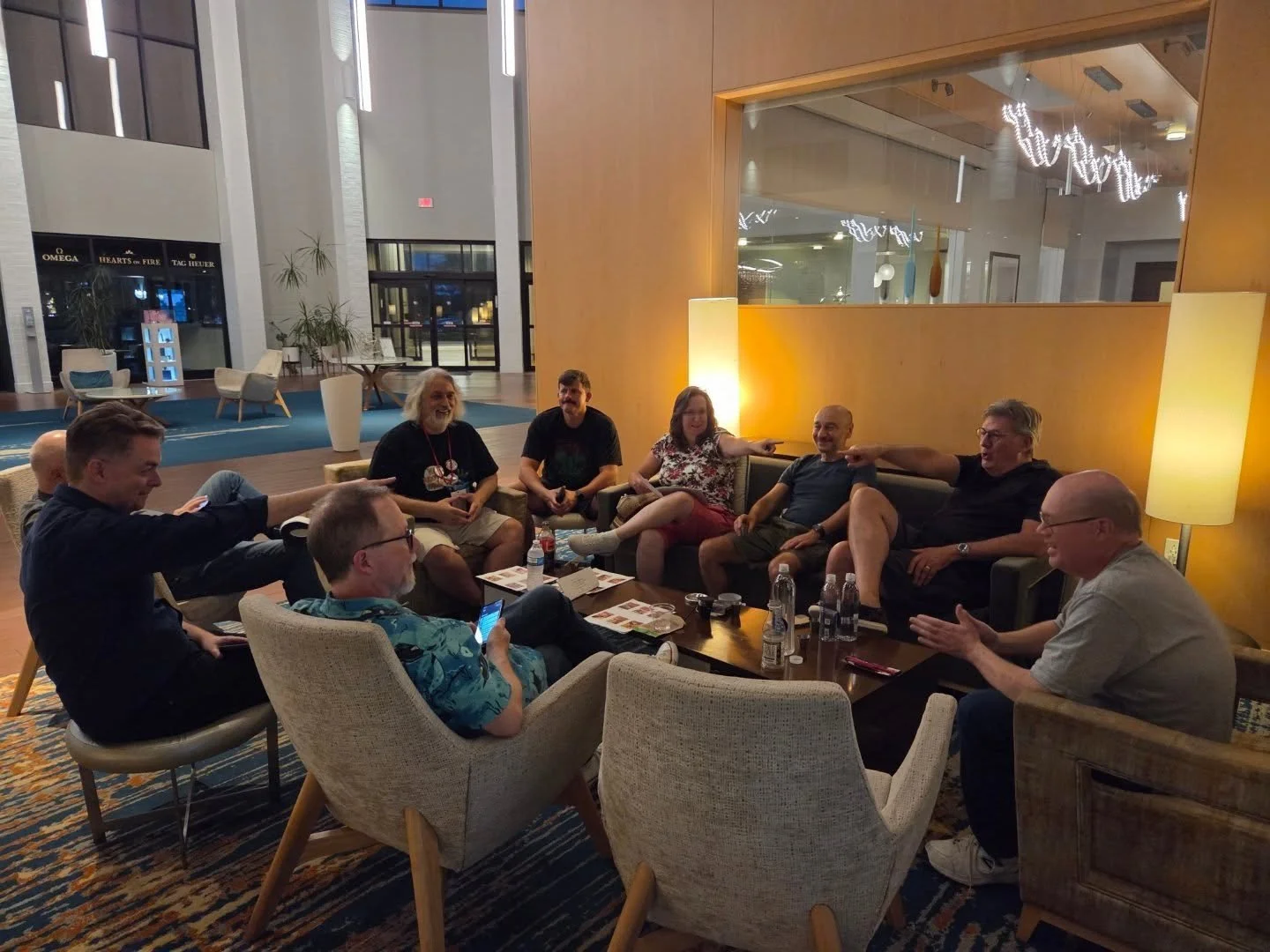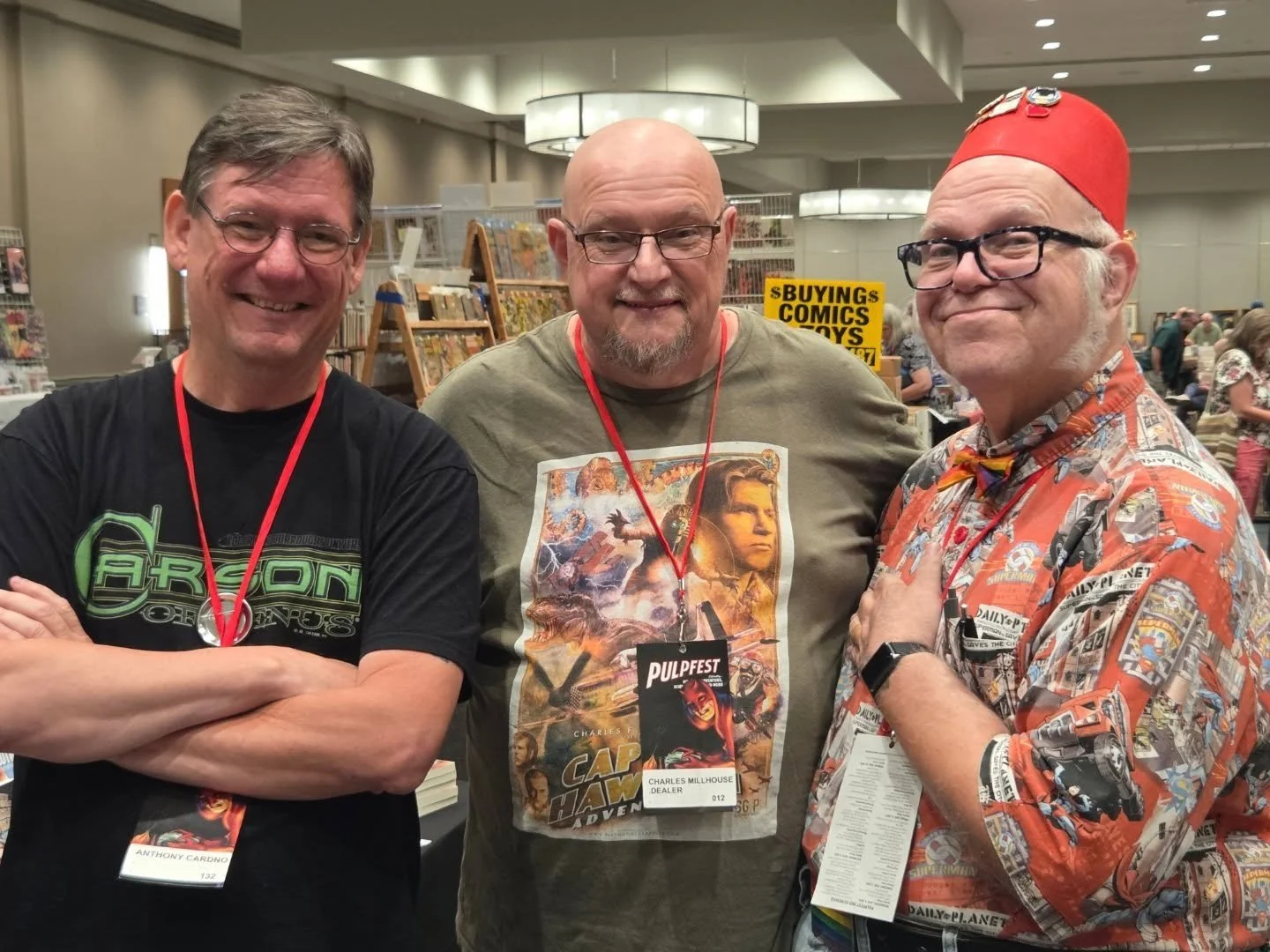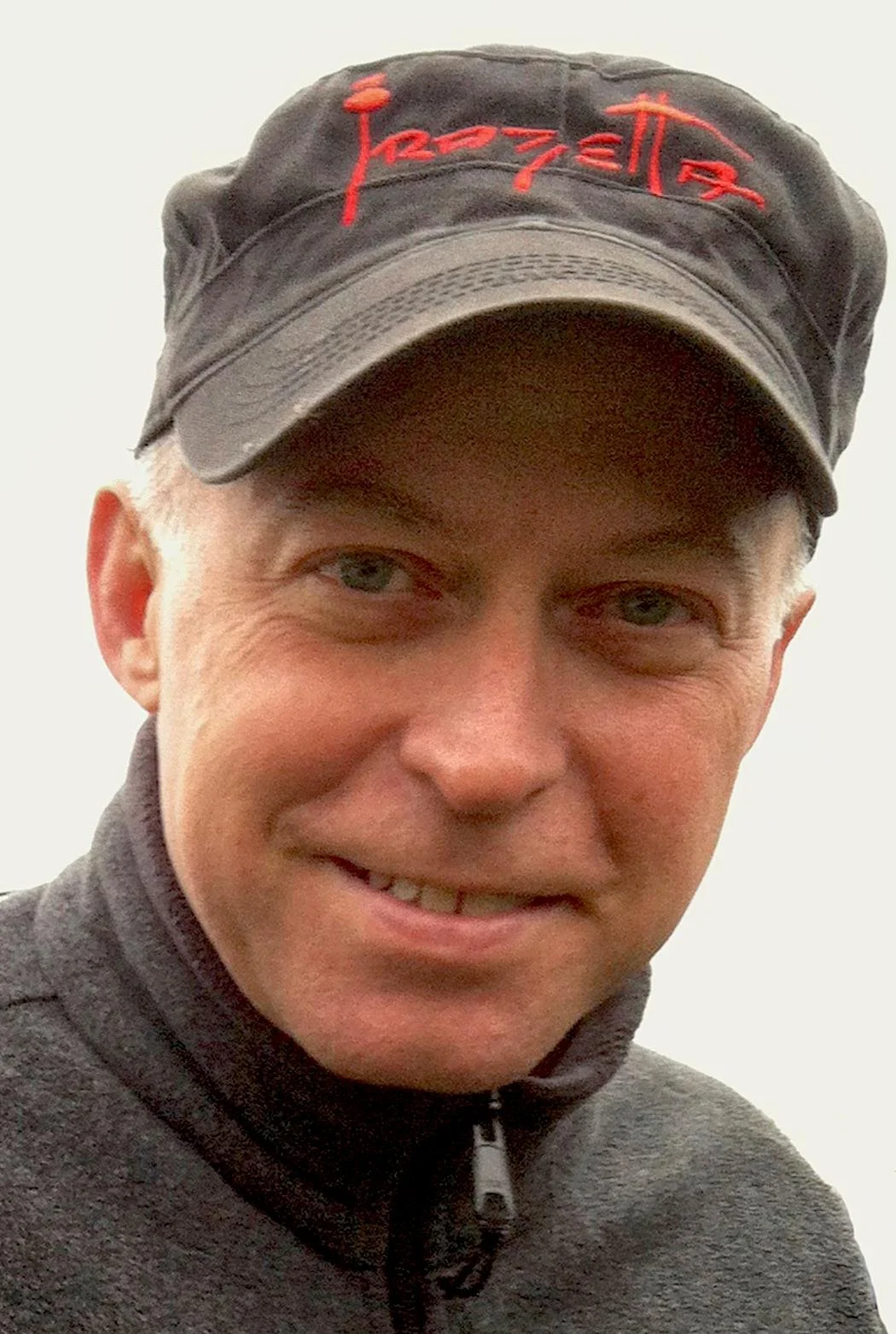PulpFest 2025 is officially in the books. Which means so are FarmerCon XX, ERBFest 2025, and DocCon 2025. I had a phenomenal time hanging out with old friends, making new friends, spending too much money, staying up too late, and driving to/from Cranberry PA … but it was all worth it. There were way more than 10 Top Moments of the Con(s), but here are a bunch of them:
BEING MISTAKEN FOR WIN ECKERT’S BROTHER
Win and I have known each other a good few years now. But this is the first time anyone seeing us next to each other has sincerely asked “are you guys brothers?” (In this case, our waitress at Primanti Brothers during our Wednesday night Pre-Con dinner). I, for one, took the question as a compliment. Check out my interviews with Win HERE and HERE to get a sense of why I consider it a compliment.
“Twins” Anthony R. Cardno and Win Scott Eckert
BEING A (SMALL) PART OF THE RETURN OF DOCCON
DocCon (the convention dedicated to all things related to Doc Savage) has a venerable history but has taken a few years off … until Jen DiGiacomo had the idea to revive it as the latest “mini-con” to happen under the PulpFest banner. I was a (very small) part of the planning committee (being perhaps the Least Knowledgeable Doc Savage Fan Ever), my main contribution being a marketing idea (that didn’t happen for this year but may be considered for 2026, so I don’t want to spoil it) and then being the “sub-in” guy at the DocCon tables when the other folks, mainly Ron Hill (who I interviewed HERE), needed to be on panels or introducing the film.
DocCon crew, L to R: Anthony R. Cardno, Anthony Rais, Bill Lampkin, Ron Hill, Scott Cranford
THE EDGAR RICE BURROUGHS INC PANEL
Okay, most of what Cathy Mann Willbanks (ERB Inc’s Vice President of Operations) and Christopher Paul Carey (Vice President of Publishing) announced on this panel had already been announced at San Diego Comic Con … but that didn’t stop me from being excited to hear the details in person. They announced upcoming novels (the next ERB Universe novel from the aforementioned Win Scott Eckert; a new Barsoom novel from Chris L. Adams under the “Wild Adventures” banner; new ERBU novels in the Land That Time Forgot and Monster Men series); a new John Carter and Woola action figure set from Frazetta Girls; and several new animation projects including a Victory Harben ERBU animated series in development! (My Interviews with Christopher Paul Carey HERE and HERE.)
Most of the ERB Inc panel. L to R: Christopher Paul Carey, Henry G. Franke III, Win Scott Eckert, Chris L. Adams, Douglas Klauba. Missing because my phone is a jerk: Cathy Wilbanks. SORRY, Cathy!
THE WICKER MAN
During a conversation with Craig McDonald during which I bought his used copy of the novelization of The Wicker Man, I discovered that not only is there a novelization of the film … the film was also based on a long out-of-print novel called Ritual by David Pinner (and that novel has a sequel, The Wicca Woman)! How out of print is it? So out of print that there’s no English language paperback edition (only a Spanish language version) and the original hardcover is going for over $1,000 on the secondary market. But there IS a reasonably priced e-book version of both of Pinner’s books. Which you know I’ve already ordered. (Interview with Craig McDonald HERE).
L to R: The copy of The Wicker Man novelization I bought from Craig McDonald, the cover to the e-book of Ritual, the cover to the e-book of Wicca Woman.
FLINCH-FEST
To say that I think highly of Jim Beard and John C. Bruening, co-founders of Flinch! Books, is an understatement. (And no, it’s not just because Jim included my essay on Jack Kirby’s short-lived 1970s DC Comics series The Sandman in his book Jack of All Comics! a few months ago. But why pass up a chance at a shameless plug? Also, HERE’s the Interview about the book with Jim.) Flinch! started ten years ago, and their panel at PulpFest talked a little about that history and featured reading from their new and upcoming releases (Jim’s fourth Sgt. Janus book, and John’s upcoming fourth Midnight Guardian book). These two have such an easy, funny, rapport. They are also great dinner companions and conversationalists. I also probably spent way too much time chatting with them at their table and lost them a few sales. (Kidding.)
L to R: Flinch! Books co-founders John C. Bruening and Jim Beard.
CHRISTOPHER LEE
During that conversation with Craig McDonald about The Wicker Man, our friend Kim Turk mentioned having seen some anthologies with Christopher Lee’s name on the cover as Editor, and I went to check out them out. Kim patiently waited for me to notice the real prize she’d already seen … a hardcover copy of Lee’s memoir … signed by the man himself! Reader, you know I bought it immediately.
MARK WHEATLEY AND DOUG KLAUBA
It is incredibly fun to sit in a room and watch two amazing artists, both of whom have drawn Tarzan and other Edgar Rice Burroughs characters, talk about all the great artists who have drawn the Lord of The Jungle over the years, including what they admire about those artists’ work. (Click on their names to find my interviews with Mark Wheatley and Doug Klauba.)
L to R: Mark Wheatley, Douglas Klauba
DOC SAVAGE, THE JLA, AND THE JSA
Did I mention that I spent too much money? I’m not going to post pictures of every book, magazine, and print I bought … but along with the Christopher Lee book, the other Most Pricey purchases including six original Doc Savage pulps (I’ll post 1 or 2 of their covers below) and four Silver Age Justice League issues featuring the annual crossovers with the Justice Society. (I was also eye-ing a Golden Age issue of The Black Knight, but it was way outside my price range.)
FARMERCON DINNER AND LOBBY HANGOUTS/CHATTING AT DEALER AND AUTHOR TABLES
The reason I started attending this convention was to meet in person my fellow Philip Jose Farmer fan friends, who had been so welcoming to me in various online forums, and hanging out with them at dinner(s) and in the lobby after even programming ends is always one of, if not THE, highlight of the weekend. It was no different this time, even though our numbers were slightly smaller than usual thanks to scheduling conflicts and other things. There is such a big overlap between PJF, ERB, and Doc Savage fans at this convention that most of the people I’ve mentioned above, and many I haven’t, were present at all times. And visiting with authors like Glen Held, Brian K. Morris and Charles F. Millhouse and artists like Don Simpson and folks like Henry Franke of the Burroughs Bibliophiles at their tables is always fun as well. (Interviews with Glen, Henry, Brian and Charles at the links; interview with Don coming soon!)
L to R: Anthony R. Cardno, Brian K. Morris, Charles F. Millhouse (The “Middle Initial Squad”)
